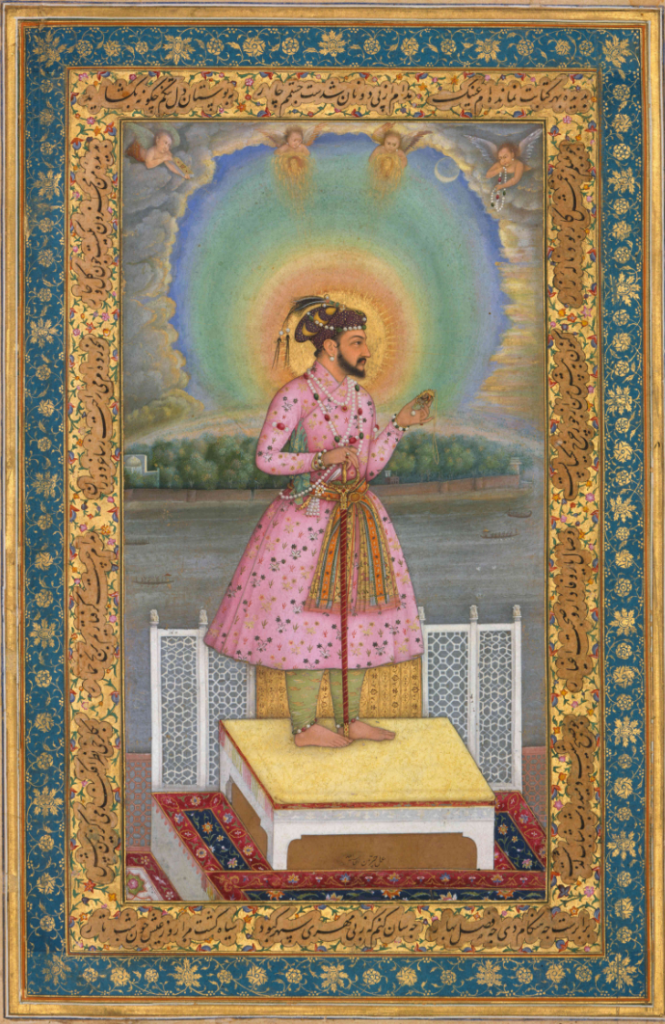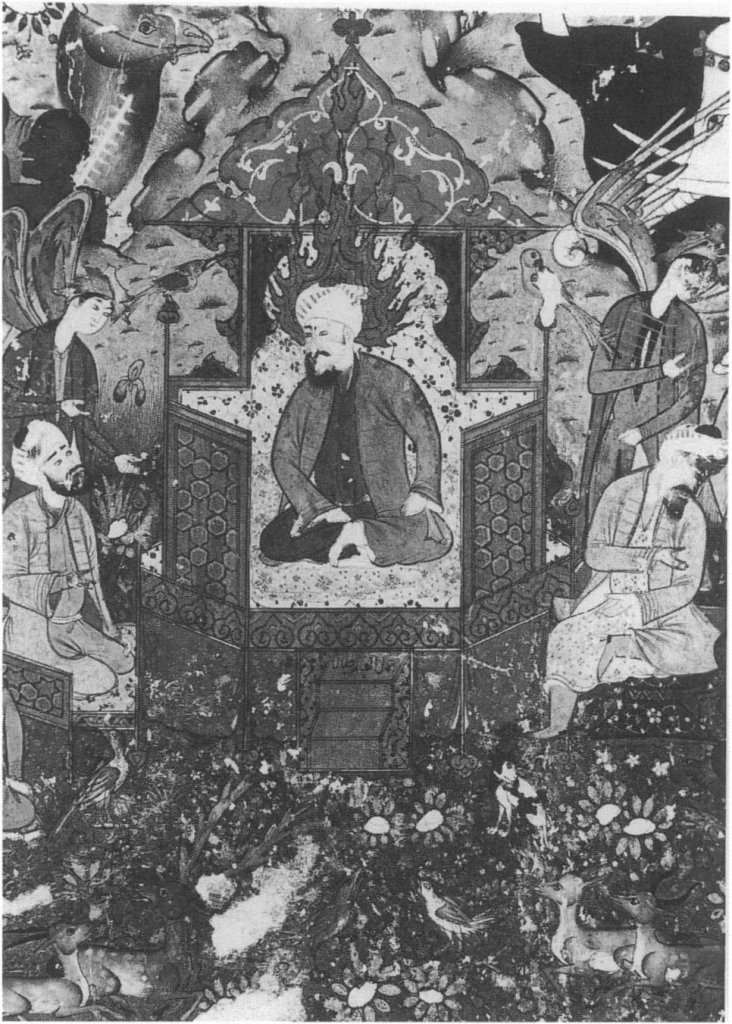
“I can bring it to you in the blink of an eye” Sura 27:40
The story of the “Asaf Jahi” dynasty starts in the aftermath of the last powerful Mughal king, Aurangazeb. Mir Qamar-ud-din Khan Siddiqi Bayafandi was a descendant of Mughal generals and courtiers from both sides. His paternal grandfather, Kilich Khan is well known for his dramatic role in the siege of Golconda where a canon bombardment had amputated his arm and resulted in his death. Owing to the promising prospects the teenager exhibited in his fast learning warrior skills, he was awarded his first title “Chin Qilich Khan” (boy swordsman) at the age of 19 by Aurangzeb. Little did Aurangzeb know that this teenager was going to change the course of history of Golconda kingdom again; a path Aurangzeb himself treaded and obsessed over all his life.

Later, one of Aurangazeb’s successors, Farrukhsiyar awarded Qamaruddin Khan the post of Viceroy of the Deccan with the title of Nizam ul-Mulk (Regulator of the Realm) Fateh Jung. However, it was not until the reign of Muhammad Shah, Qamaruddin Khan emerged of his own after he led a decisive battle of Sakharkeda suppressing the rebel Mubariz Khan in 1725. He was awarded the title of “Asaf Jah” and was made the Grand Vizier of the Deccan (1), the highest of titles anyone in the Mughal administration was to receive as it meant “Asaf-like” (2) similar to the Vazier “Asaph” or “Asaf” (also “Asif”) in the court of King Solomon (Suleiman a.s).
This is where the intrigue starts. If Qamaruddin Khan was “Asaf-like” what does that make the Mughals?
That the Mughals considered themselves as representatives of God is subtly confirmed by Karen Ruffle (3) who observes “Unlike their Mughal contemporaries in the North, the Qutb Shahs did not fashion themselves as second Solomons on earth.” Paintings during the Mughal period often depicted a halo around the Mughal emperors taking a cue from the ancient depictions of Abrahamic Prophets and Saints. In order to understand the gravity of the title fully, one is to dig deeper into the ancient history of the Asaf-Solomon relationship.

There are fascinating stories about the enigmatic personality “Asaf ibn Barkhya” both in the Bible and the Quranic exegesis of Al-Tabari (839–923 CE) who is considered to be an eminent Islamic historian and scholar who reconstructed the eras of early Prophets and Saints of Abrahamic religion from the Bible and a gamut of Arabic sources.
According to Al-Tabari, Asaf was also “a trusted counselor who was never turned back from Solomon’s gates, and at any hour he desired to enter any of his apartments, he entered, whether Solomon was present or not” (4). At times when needed Asaf would also have the grit to fix the state of affairs during Solomon’s reign. Al-Tabari narrates one such story of how Iblis i.e the devil had impersonated Solomon and ruled over his throne for 40 days. This was a repercussion for one of Solomon’s wives to have bowed to an idol (of her father whose kingdom Solomon annexed) without his knowledge for 40 days. Asaf then had to take upon himself the task to ensure the re-thronement of Solomon.

Asaf bin Barkhya is also mentioned in the Quran albeit not by name in the Surah An-Naml where a conversation between King Solomon and Vazier Asaf is captured where Asaf says, “I can bring it to you in the blink of an eye” (5). He was referring to the throne of Bilquis i.e. the powerful Queen of Sheeba, a kingdom that included modern day Sudan, Southern Arabia and the horn of Africa – Ethiopia, Eritrea and Sudan etc (6). When the Queen resisted the invitation of Solomon to accept the Abrahamic faith, Asaf teleported the magnificient throne of the Queen to Solomon’s court (“in the blink of an eye”) to demonstrate the might of the Abrahamic God. Folklore further suggests that she became a believer thereafter and married Solomon and remained his wife for a few years before eventually returning to her kingdom.
In the Old Testament of the Bible, Asaf is mentioned to be a high-ranking official serving both King David (Dawood a.s) and King Solomon (Sulaiman a.s). He is known to be of Levite tribe and one of the three “prophetic” musicians of the house of God (7). He is credited to be associated to the Biblical texts of Psalms 49, 50 and 73 to 83. Asaf is said to either be the author or the transcriber of these psalms that were originally recited by David which falls in line with the Islamic belief that Psalms, also known as Zuboor (one of the 4 books from God) was revealed to King David. Psalms also contain contributions from Solomon and Moses.

Such is the legacy and weight of the title “Asaf Jah” given to the first Nizam of the Deccan. One can situate similar grit and resolve in the personality of Asaf Jah I when he took upon himself to resolve the state of affairs of the Mughal Empire when they fell wayside. In the end he had to distance himself from the Mughal throne as he disapproved of their deteriorating morals and hold on the empire and established an independent kingdom in the Deccan of his own, although never declaring formal independence out of respect, perhaps more towards the title than to the throne.
On his part Asaf Jah I had successfully restored an order to the chaos in the Deccan. He was very particular about administration of the state and affairs of the people, of both Hindu and Muslims. He considered that the affairs of people had been entrusted by the grace of God and one should always devote themselves to the duties of the people after tending to the religious duties (8).
References
- “History”, Raghunath Rai, FK Publications.
- “Fabulous Mogul: Nizam VII of Hyderabad” by D.F. Keraka
- “Making Shiʿism an Indian Religion: A Perspective from the Qutb Shahi Deccan” –
ReOrient , Vol. 5, No. 2 (Spring 2020), pp. 287-304, Published by: Pluto Journals - “The Children of Israel”, The history of Al-Tabari Vol 3 translated by William M.
Brannier - The Quran 27:40
- “Bilquis and Sulayman” episode from The Islamic History Podcast.
- The Bible, 1 Chronicles 15
- “Eiteenth Century Deccan” by Madhavrao P. Setu
Moses Tulasi is a Hyderabad based documentary filmmaker who occasionally writes on Hyderabad & Telangana history and culture.

